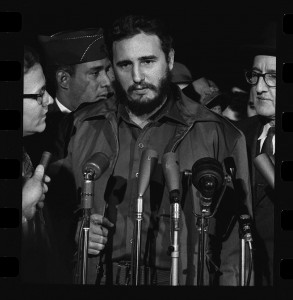In January 1959 Fidel Castro’s revolutionary forces seized power. While the Cuban leader initially claimed this was not a communist revolution, a year later Cuba formally aligned itself with the Soviet Union. Relations with the United States deteriorated further in 1961when the U.S. supported CIA-trained anti-Castro exiles in the Bay of Pigs invasion – a failed attempt to overthrow Castro and a major blow for President Kennedy. In this context, in the summer of 1962 Castro accepted the Soviet offer to install missiles in Cuba as a deterrent to a U.S. invasion. During the crisis Castro urged Khrushchev to defend Cuba and reject American demands to withdraw the missiles. On October 27, believing a U.S. attack was imminent, Castro urged Khrushchev to initiate a nuclear first strike. Castro was excluded from the negotiations and felt that, by agreeing to withdraw the missiles, the Soviets had betrayed Cuba.

Harvard Kennedy School’s Belfer Center has created this site as a resource for the Cuban Missile Crisis. Designed to help policymakers, students, and interested citizens draw lessons from these critical events half a century ago, this site not only provides background on the crisis that brought the world to the brink of nuclear disaster in October 1962 but also offers tools to understand how it can inform contemporary policy.
